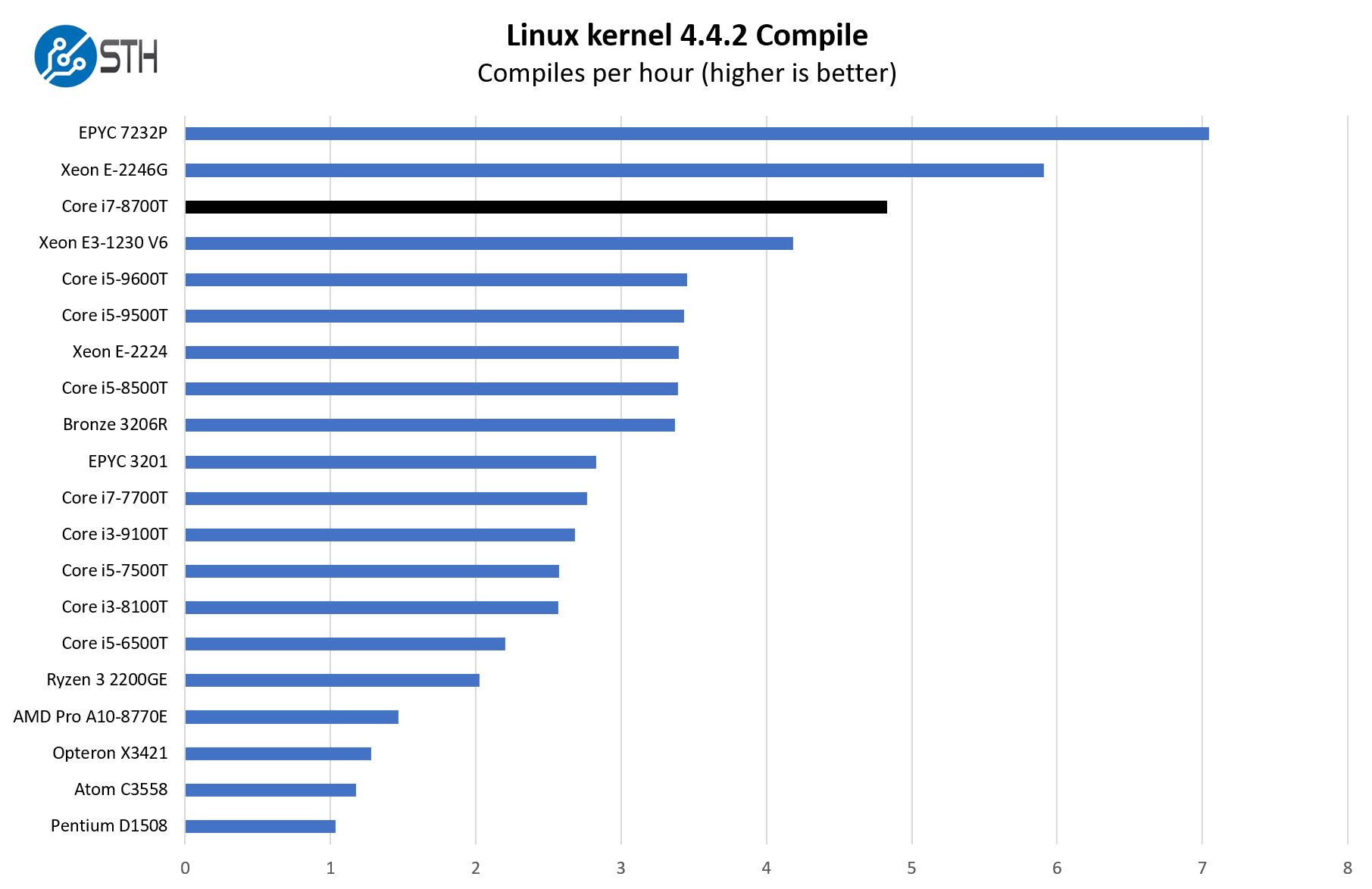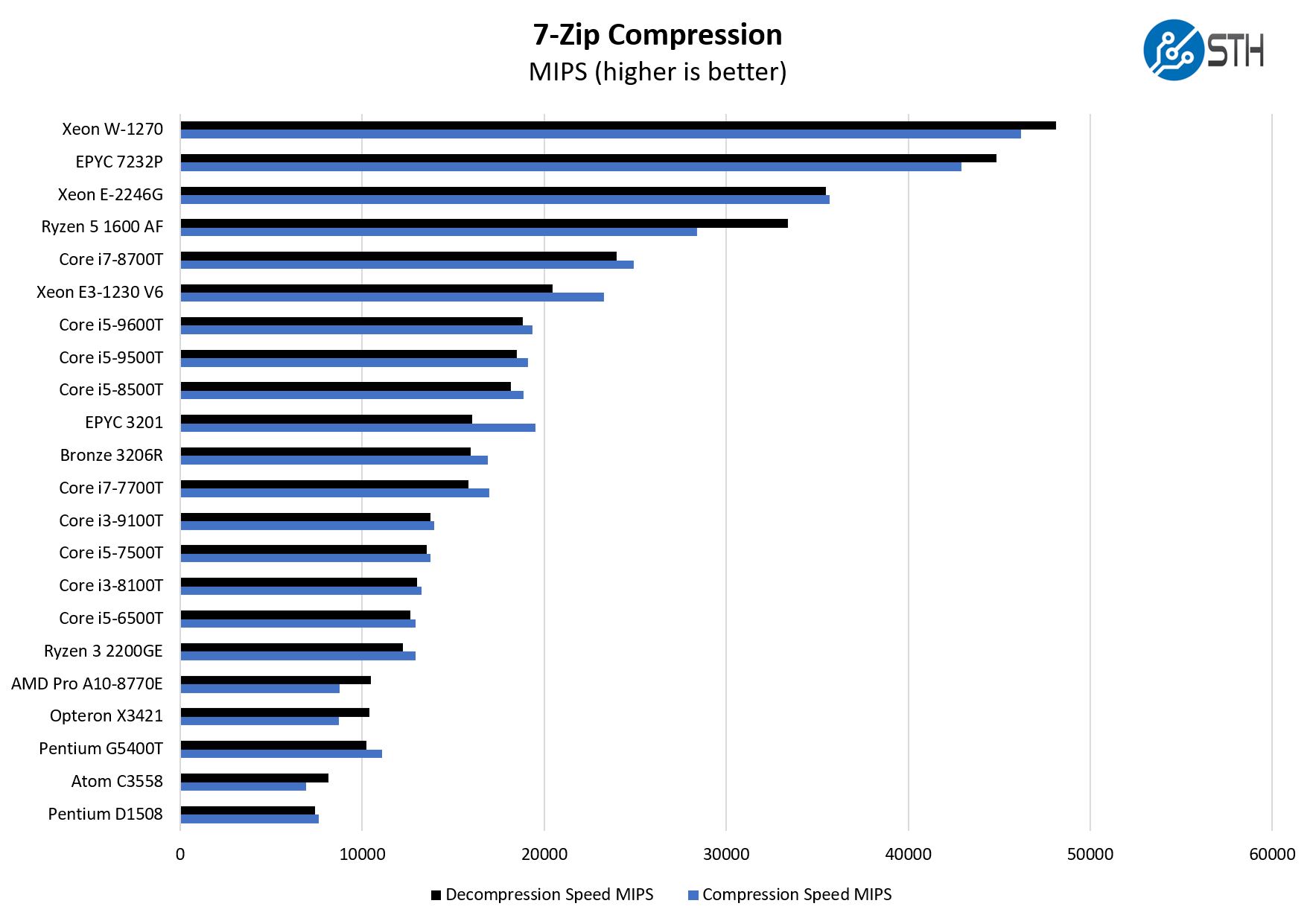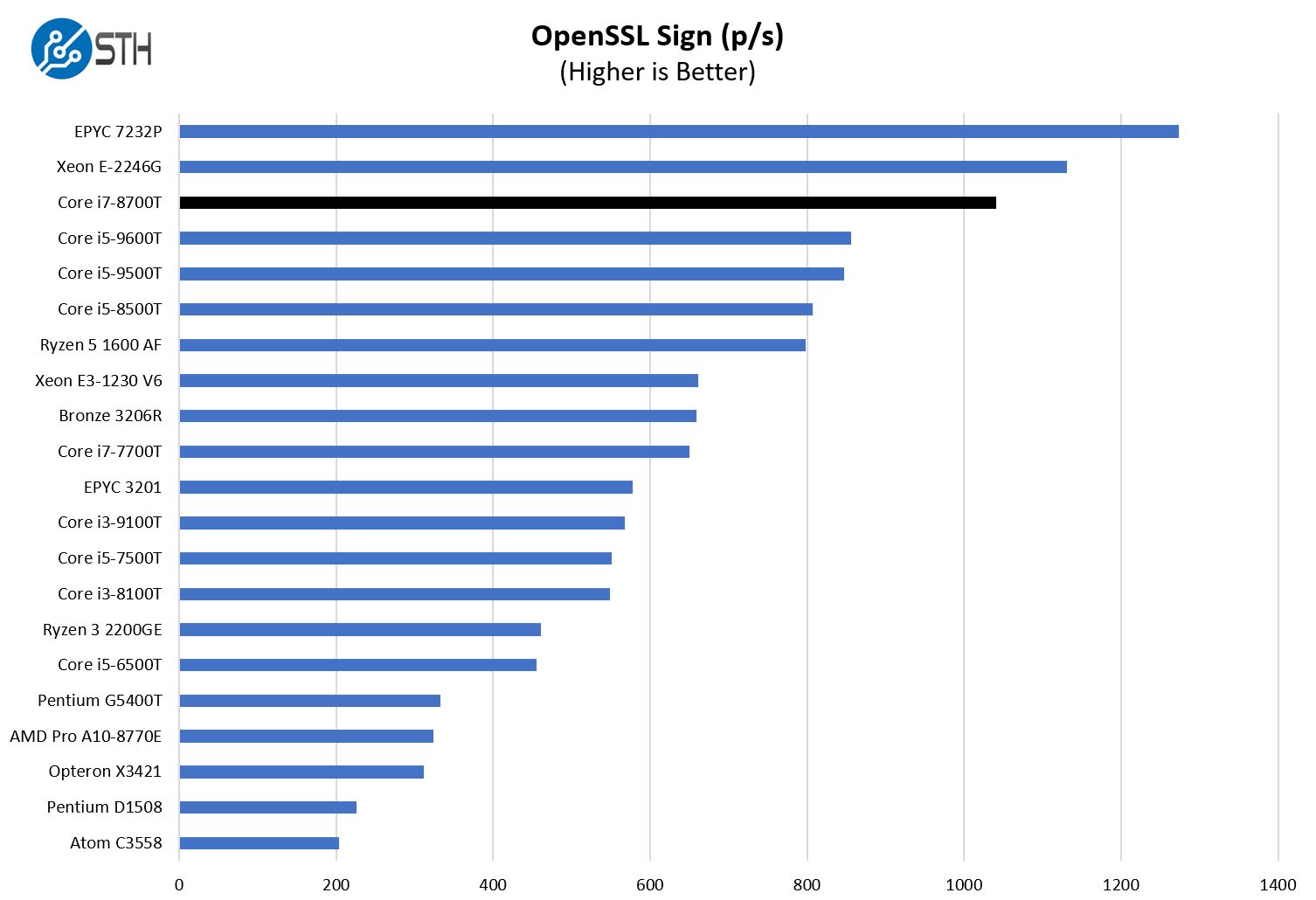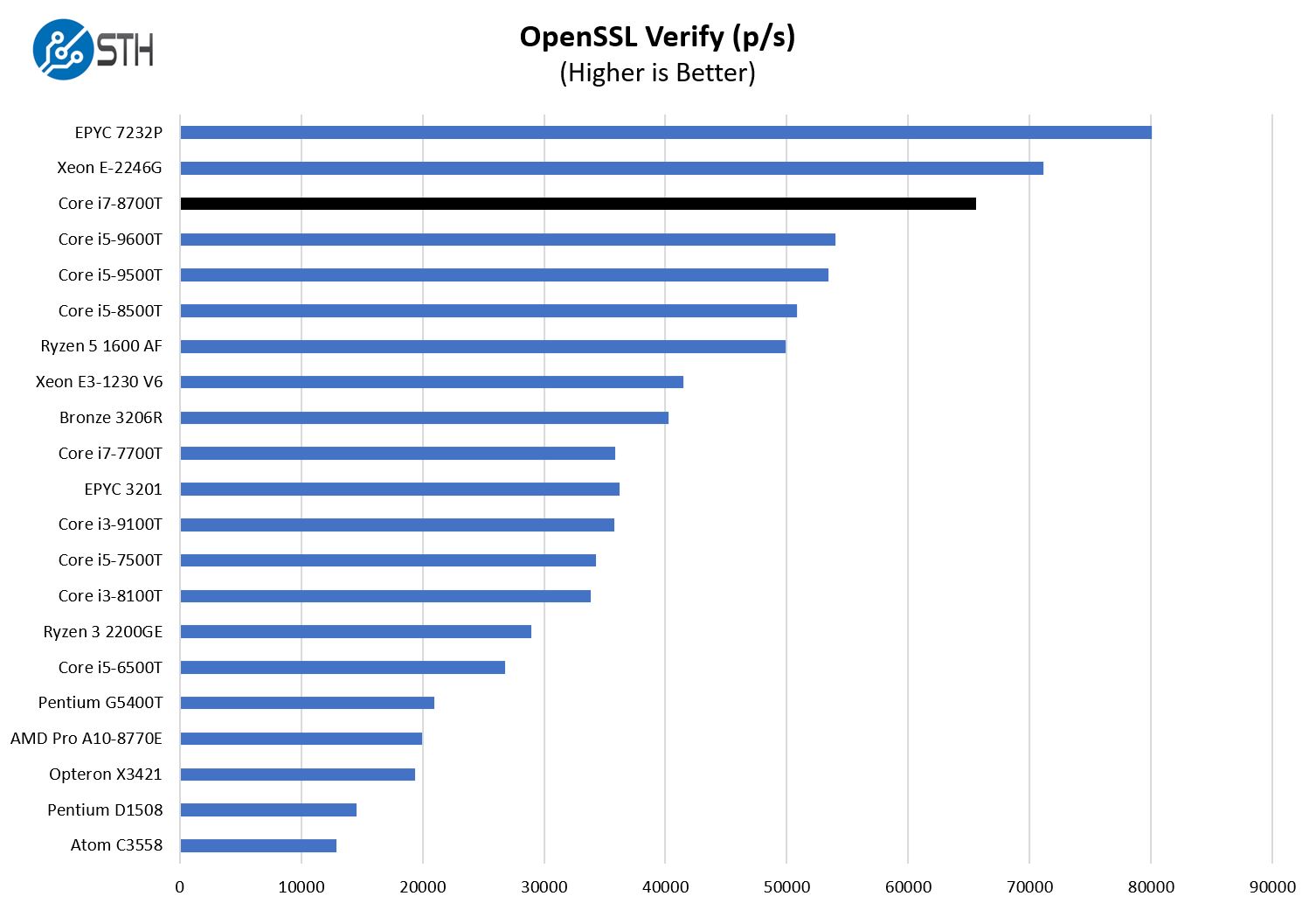Lenovo ThinkStation P330 Tiny Performance and Power Consumption
Instead of going through the entire Linux-Bench test suite, we are going to show a few performance and power numbers here to give a general sense of performance. We actually planned to do storage testing, but then we realized that there was a huge variability in terms of what drives could be found in machines.
Python Linux 4.4.2 Kernel Compile Benchmark
This is one of the most requested benchmarks for STH over the past few years. The task was simple, we have a standard configuration file, the Linux 4.4.2 kernel from kernel.org, and make the standard auto-generated configuration utilizing every thread in the system. We are expressing results in terms of compiles per hour to make the results easier to read:

The Core i7-8700T performs much better than expected in some ways. The increase in base clock speeds along with the additional 6 threads boosted performance significantly.
7-zip Compression Performance
7-zip is a widely used compression/ decompression program that works cross-platform. We started using the program during our early days with Windows testing. It is now part of Linux-Bench.

As a quick note here, we had the option to get the Core i5-8500T for around $10-15 less. That is not a huge delta and it seems worthwhile given the performance delta. We may have just gotten this as a street pricing on the day we purchased, but it may be worth looking for a similar unit.
OpenSSL Performance
OpenSSL is widely used to secure communications between servers. This is an important protocol in many server stacks. We first look at our sign tests:

Here are the verify results:

Performance-wise, we see a solid figure here that is into the lower end of the Xeon E-2200 series. That may not be the most spectacular CPU, but it did perform well for us in this system.
Next, we are going to discuss power consumption before getting to our final words.




Thanks for the review.
I was very interested into buying one of these as a Plex server given the capability of the entry level Quadro for the 2-3 family members on my server, but as it would sit in my living room, it sounds like the noise would be an issue…
Any recommendation for a similarly spec’ed system, but quiet? (doesn’t necessarily have to be that small)
Maybe better to assemble one myself?
STH wrotte: “ M.2 retention mechanism is a blue tool-less design as we saw in the M920x Tiny. After servicing a few dozen of these nodes, having everything tool-less is a major design win for us. ”
I have bad experience with these m.2 tool-less blue nightmarish mechanism on several P320 proxmox nodes…after three years in use, there was need to remove nvme and these blue knobs was so tight, that imposible remove them with bare hands and i have nails on long side..so i everytime there is need to use tools to do that.
Thanks for the review and video, really informative. If one was willing to sacrifice the GPU, could the PCI slot be used for a 10-gig Ethernet adapter?
Good review of the system. Any chance providing a pointer to a website where these are sold for the mentioned price?
Amazing! Had been looking at buying some NUC 9s to set up a lab, but one of these popped up on Ebay with the i7-8700t CPU relatively cheap (at least for the UK) and just popped in a Dual 10 Gb card and VMware seems very happy with it all! Am now keeping an eye out for any bargains and should have a 3 host lab with 10Gb connectivity for less than the cost of one loaded NUC9!
2 fringe downers vs the NUC are no support for 110mm drives and no 2nd slot for something like an Nvidia T4 or similar – That said, if I had the money for T4s and licensing lying around I’d also have bought the NUC 9 or something like one of the embedded Xeon Supermicro boxes.
STH wins again :D
I have had one of these for four and a half years now. I have periodically upgraded it as parts got cheaper. It started as an i7-8700T with 16GB of RAM, 250GB M.2 drive and a P630 2GB video card. It now has an i9-9900T with 32GB of RAM, both the 250GB and a 1TB M.2 disk as well as a T1000 8GB video card. I picked up the DVD cage as well as the special cable for a song and then removed and upgraded the drive to one capable of UHD Bluray. Capable of easily playing a UHD Bluray disk and being quiet while doing it makes this the perfect portable theater rig. Paired with an LG PF1500 LED projector, an FXAudio 802C Pro amp, and a pair of Zilch modded RS Optimus Pro 7 speakers I consider this the ultimate setup. For desktop use I can’t see where you could go wrong again. It boots in about 10 seconds, is stunningly fast and very compact, has ports galore, and is capable of running multiple monitors. Of course there is the down side and that is the WiFi card and interface. It is CNVio, the winmodem of WiFi, and essentially removes any option for upgrading the WiFi. I can’t say what I think of this interface for fear of having the post cut. Other than that, pick up one for a song and do a bit of upgrading and you have a decade computer.